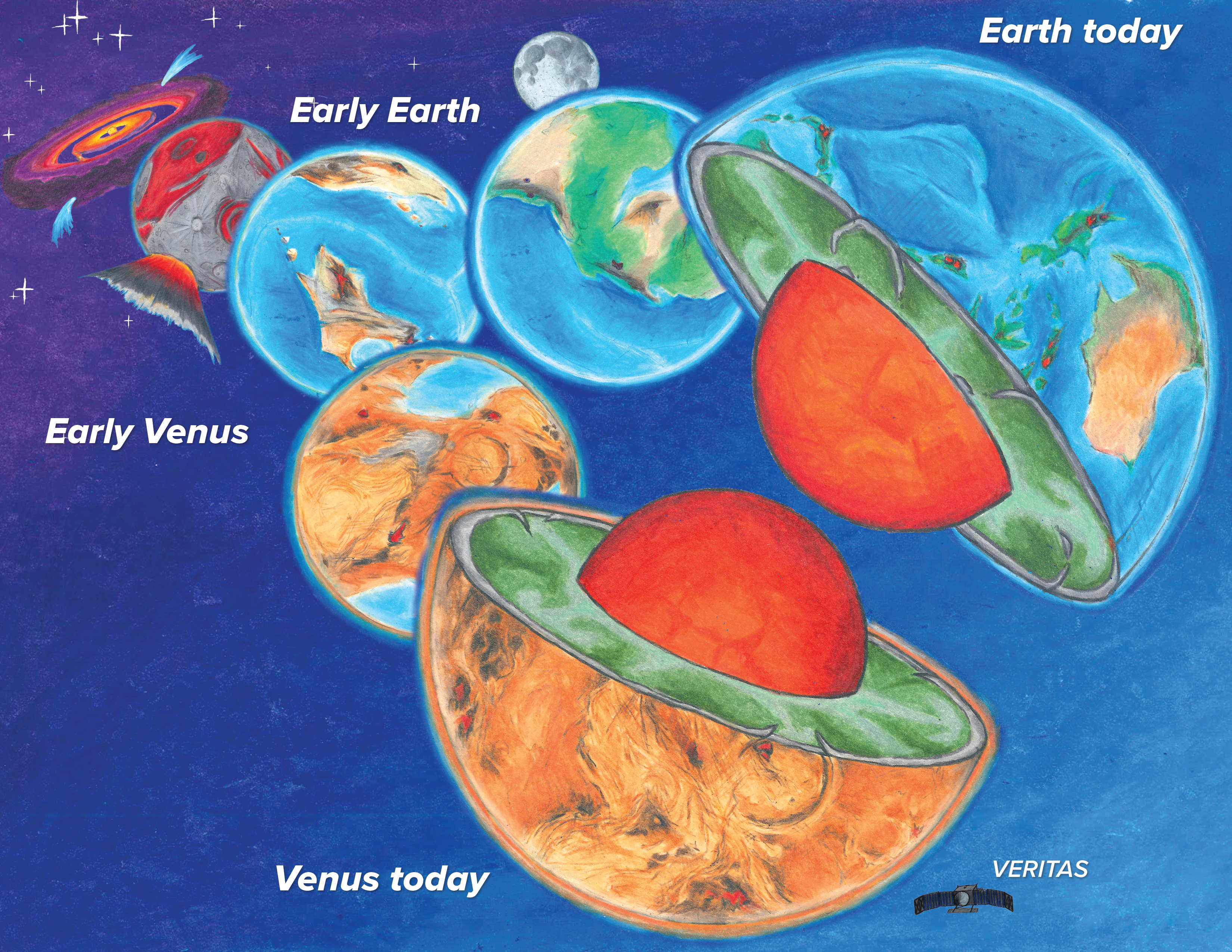Venus
What Could Have Been
Venus is a terrestrial planet, 95% Earth’s size, with mountains, clouds and rain. If not for the differences in our atmospheres, it might be considered Earth’s twin. Venus’ surface pressure is 90 times that of Earth's and it is covered by clouds made not of water, but of sulfuric acid. The surface of Venus is an incredible 800 degrees Fahrenheit, which is hot enough to melt lead! We think that Venus and Earth may have started with very similar compositions, so how did they end up so different?
A Global Greenhouse
In the early solar system, Venus’ proximity to the Sun meant that water was efficiently evaporated at the surface. Water vapor is a greenhouse gas, letting in light and preventing heat from escaping. In a process called “runaway greenhouse,” water vapor further increases temperatures to the point where oceans boil away. Water vapor entering Venus’ upper atmosphere would have been broken down and may have escaped to space over time. Without oceans, carbon monoxide (CO) emitted from the interior through volcanoes cannot be recycled into the interior through processes like plate tectonics. CO is a powerful greenhouse gas and the primary component of Venus’ modern atmosphere. Today, LPL researchers study the surface and atmosphere of Venus to better understand its complex history.
The Morning Star
Venus’ thick, bright clouds cover its entire surface, making Venus highly reflective. Because it is so shiny and near to Earth, Venus appears brighter in our night sky than any other star or planet. Because Venus orbits closer to the Sun than does the Earth, it is never too far from the Sun in the sky, earning Venus the nicknames “Morning Star” and “Evening Star.”
Did You Know?
Venus is the only planet in the solar system to spin retrograde, or backwards. All planets in the solar system orbit counterclockwise as viewed from above (Earth’s northern hemisphere) and all but Venus and Uranus rotate in the direction of their orbits (check out the Uranus plaque to find out more about its wacky rotation). In addition, it takes 243 Earth days for Venus to rotate just once—that’s longer than its year!
QUICK FACTS
| MASS: | 4.9x1024 kg | 82% that of Earth |
| DIAMETER: | 12,106 km | 95% that of Earth |
| SURFACE GRAVITY: | 8.9 m/s2 | 91% Earth |
| AVG. SURFACE TEMPERATURE: | 800° F | 427 °C |
| AVG. DISTANCE TO SUN: | 108 million km | 0.72 au |


